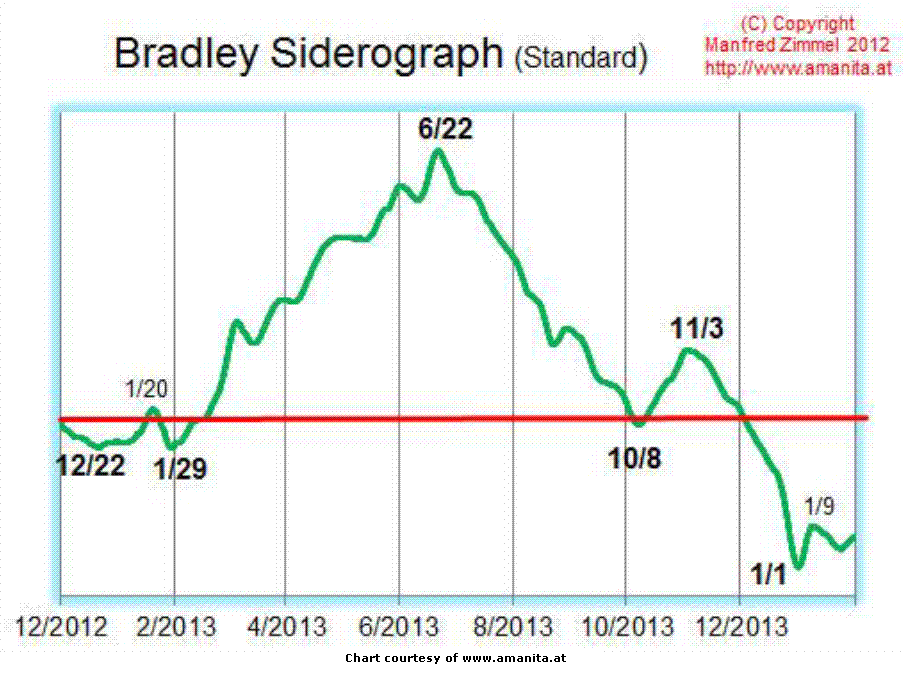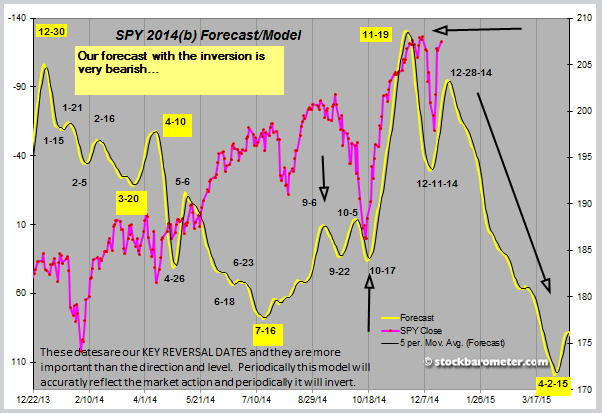Market Forecasting Tutorial Part 1 Gauging Sentiment
Post on: 7 Май, 2015 No Comment

Today, Im going to show you some relatively simple techniques that will (hopefully) help you learn how to forecast market direction and timing. And I am going to look at the current market conditions to illustrate these points.
Although market forecasting is arguably the single most important skill an investor can possess, it is rarely mentioned. With little surprise, it is perhaps the most difficult skill to master. When market forecasting is mentioned, most analysis emphasize volatility indexes, oscillators and other indicators like put/call ratios, market breadth, Rydex funds, money flow, etc. While these indicators are often helpful, they are insufficient for forecasting market direction and timing.
By now I hope youre beginning to see how things play out in a bubble meltdown. If you didnt learn how the drama, deceit, panic and denial pummeled the market piece by piece during the dotcom collapse, you have a chance to learn first hand from the current implosion of the real estate driven credit bubble. You would be wise to learn the typical course of these asset blow outs since it appears as if the Fed intends to continue this boom-bust cycle indefinitely, as its only way to create fictitious GDP growth.
Generally speaking, throughout the decline of a bubble there is a new theme every month or so. And in-between these periods, the no news is good news sentiment is usually caused for market rallies in the early stages, as denial remains a strong force. At a later stage when no news isnt enough to lift the market, pundits and CEOs come out and claim that the worst is over. First, lets look back at the past 18 months and see how things played out.
Previous Sentiment: Market Reactions from the Recent Past
(1) In late February of 2007 we saw the first signs of problems with mortgage companies that were buried deep in sub-primes.
(2) After a drop of around 500 points, the market rallied to new highs by late April.
(3) Next, the move from early March to mid-July was huge, the Dow having moved from 12,000 to 14,000.
(4) Then the avalanche began and the market dropped by 1200 points over about 4 weeks.
(5) But one day in particular (August 16, 2007) it fell to around 12,500 intraday and closed up significantly. That intraday low was a key level I knew would be retested down the road. In fact, I was certain it would fall through this 12,500 level down the road as the realities of the real estate market and banking system materialized.
(6) By early October 2007, the market made a new all-time high, of around 14,200. Many of the banks rallied, some to year highs. The market seemed to forget about the problems in the mortgage market. For those who understood the full magnitude of the problems knew this was a good time to take short positions. Incidentally, this was when I made a call to clients to short the banks. This period would mark the beginning of what would later be the zigzag downward pattern typically seen during bear market corrections. By November, it was widely believed Countrywide would become insolvent without assistance.
(7) By mid-January 2008, the market made a very large and rapid sell off, where it tested the 12,500 intraday low made 5 months earlier. After several days at this level, it fell through this psychological support within 4 days. Next, the market made another intraday low on a huge sell-off to 11,500. But once again, as in August, the Dow closed strong. I was confident this intraday sell-off would serve as another psychological support, which I felt would not hold. Much of this huge intraday sell-off was due to the news of problems faced by the bond insurers. Although they had experienced problems in late 2007, the problems at Countrywide
PowerRating ) overshadowed everything else at the time since most felt it was the strongest of all mortgage companies. In other words, if you were on top of things, you should have expected the problems with the bond insurers to take center stage after the Countrywide news faded. And in January that is exactly what happened.
(8) By early March of 2008, chart analysis confirmed a trend reversal that was highly suspected from the January market sell-offs.
(9) Yet, by early May, Wall Street and the media managed to prop the market back up to 13,100. Of course, if you had looked at the chart, you would have easily identified this as a bear trap.
I released an article Stay Clear of Traditional US Asset Classes on May 4, 2008 explaining what had happened, where we were and where we were headed. I concluded that the market was overextended both in the short and intermediate-term and advised investors to start selling with an emphasis on taking short positions in the financials. I also emphasized that investors wishing to remain invested in the U.S. market should only consider investing in the oil and health care (longer-term) industries. I was confident we would retest the intraday low made in January 2008 of 11,500, followed by a break down to hover around 11,200.
(10) Since the release of that article, the market has fallen to 10,731.

(11) Anchored by high volume, the Dow has since bounced off of this low and has rallied to 11,450 level. This was sparked by the Feds bailout plan for Fannie
PowerRating ). The rebound from the 10,700 range was indeed critical, as there was very little support down to the 10,200 level.
Why did I rehash the painful events of the past? Because it is important to keep in mind how the market responded to news. Just like we look at previous prices to measure moving averages and volatility, we must also retrace previous market sentiment.
Current Sentiment
While many will point to the VIX or VXO, put/call ratios, and other indicators, I do not find them to be as informative as looking at the most recent chart activity. Sure, we already know the volatility indicators would be high as the market sank to recent lows; thats no news to anyone. And unless you have access to daily put/call ratios, the data might do more harm than good. Now, Im not saying these indicators are always meaningless. Many times they provide tremendous insight. But during this juncture they have not provided me with any useful insight; but thats just me.
So what do we use for current sentiment? Well first of all, you should keep in mind that the previous sentiment (summarized above) and reactions to news factors into the current sentiment. How, you ask? Recall throughout most of 2007, the market continued to shake off bad news and even turned some bad news into good news as a way to push the market to new highs. For instance, news of external funding for some of the banks by sovereign funds and other foreign investors was seen as good news.
When Bernanke lowered interest rates, this was seen as good news, although rate cuts were executed too late and would only cause inflation with no real help for those looking to refinance. In other words, bad news was taken as good news. Why was it bad news? Because it showed that the mortgage and credit problems were going to be severe. Instead of interpret this as a sign of more to come; the market used it as an excuse to rally.
Only in the beginning of 2008 did the market finally interpret bad news as truly bad news and this led to the huge and rapid sell-offs. Early in 2008 the market finally realized the problems were real and quite large. The recent rally off of the critical support level around 10,800 should be interpreted as the market interpreting bad news as good, once again. However, I would have to believe that the source of at least some of this deluded optimism is based on relatively attractive market valuations. I will discuss this more later.
Mike Stathis is the Managing Principal of Apex Venture Advisors, a business and investment intelligence firm serving the needs of venture firms, corporations and hedge funds on a variety of projects, including valuation analysis, deal structuring, investment strategy, market forecasting, and business strategy. Mike is the author of several books including Americas Financial Apocalypse: How to Profit from the Next Great depression.














